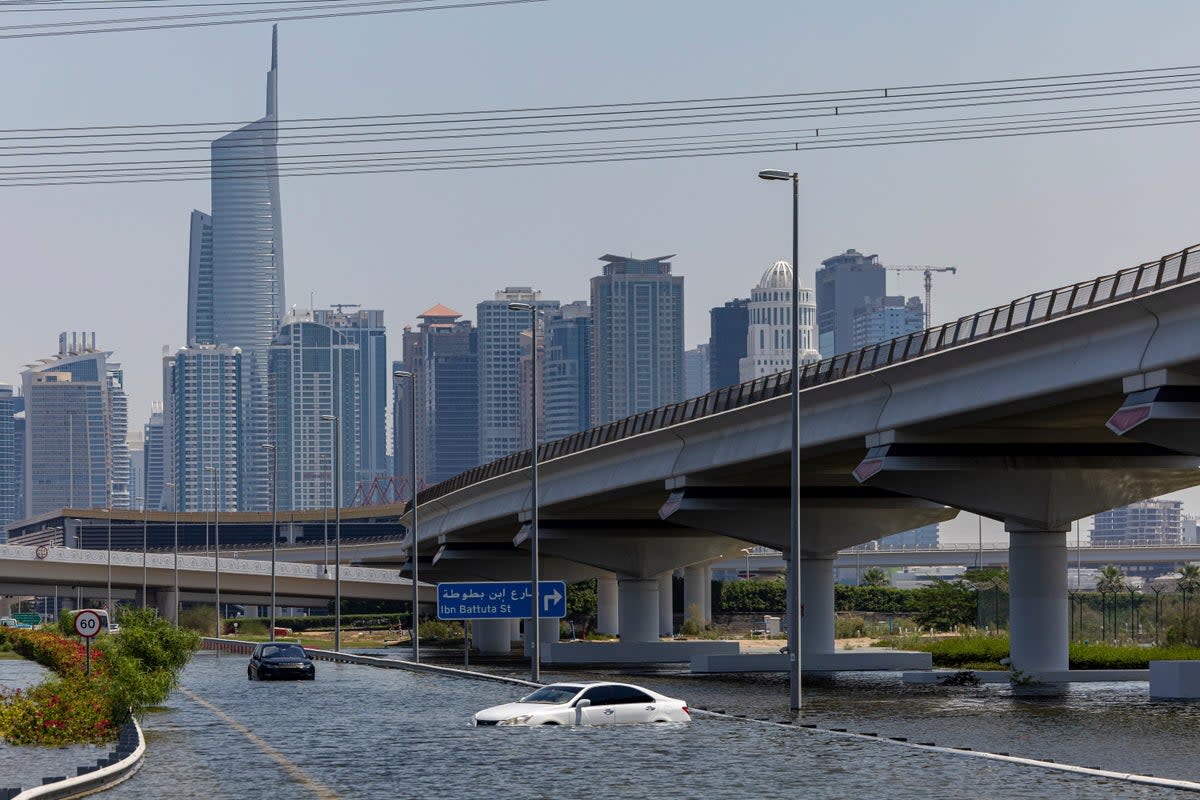Unprecedented rains leave Dubai in disarray

Dubai is known around the world for its spectacular skyscrapers, glitzy shopping malls, exotic cars and – perhaps above all – scorching hot, bone-dry weather.
So, when heavy rain began to fall early on Tuesday there was no sense of what was about to come.
A day later and the sun was shining once more, but the Emirate was reeling from an unprecedented, catastrophic weather event.
Many cities in the world might brush off 100mm of rain across 12 hours, but this was as much as Dubai might expect in an entire year.
The limitations of this ultra-modern city’s infrastructure were ruthlessly exposed by the deluge. Water cascaded off the hard desert soil and accumulated on roads built to withstand sun and sand, not water.
Schools were closed, electricity was out, homes and businesses were flooded.
Something else Dubai is known for is its vast airport, the world’s second busiest and a vital hub for both the UAE and the entire region.
Startling footage of airliners looking more like ocean liners as they attempting to navigate flooded runways told the story of inside the airport itself; but outside there was complete chaos as stranded vehicles blocked surrounding highways.
Emirates halted all departing flights on Wednesday, with incoming flights diverted to neighbouring countries, but even if flights had been coming and going, accessing or leaving the airport was virtually impossible.
We met one woman on Wednesday who told us her plane had circled Dubai for three hours before being diverted to Abu Dhabi. A further seven hours later she finally made it to Dubai, a journey that would normally take an hour, but was then left stranded with her six-year-old daughter and their luggage when a taxi was unable to take them any further.

In the end we ended up taking them to their final destination in our large SUV, the only kind of vehicle able to navigate the still-flooded streets.
By early evening the water levels had fallen, but in many areas still came up to people’s knees.
Cars remained submerged as the clean-up got underway around them. Insurance companies were no doubt bracing themselves for what will surely be debilitating surge of claims.
En route to report from the airport on Wednesday night we got a firsthand sense of the panic many motorists here have been feeling for the past 24 hours as even our vehicle almost got stuck in near waist-deep water. In the end we were forced to turn back – the huge hub still inaccessible.
A touching sight here over the past day has been that of people rallying together, drivers of bigger vehicles stopping to pick up the stranded and help them on their way.
Emergency services were working around the clock and hotels were even giving up rooms for people left helpless. We even saw little children taking to the streets in rubber dinghies and canoes.
But we also know that a 70-year-old man living an hour and a half from Dubai perished in the floods, while at least 17 people in nearby Oman are known to have lost their lives.
While some had suggested the UAE’s cloud-seeding activity may have played a part in the unprecedented rainfall, the Emirate said on Wednesday that no such actions had taken place prior to the rains.
Instead, it appears that climate change was responsible for this extraordinary event.
For the country that recently hosted COP28 this was a timely warning that we are in a new paradigm in which extremes will likely become commonplace; Dubai has much work to do if it is to better withstand them in the future.
Eleni Giokos is Anchor & Correspondent at CNN


